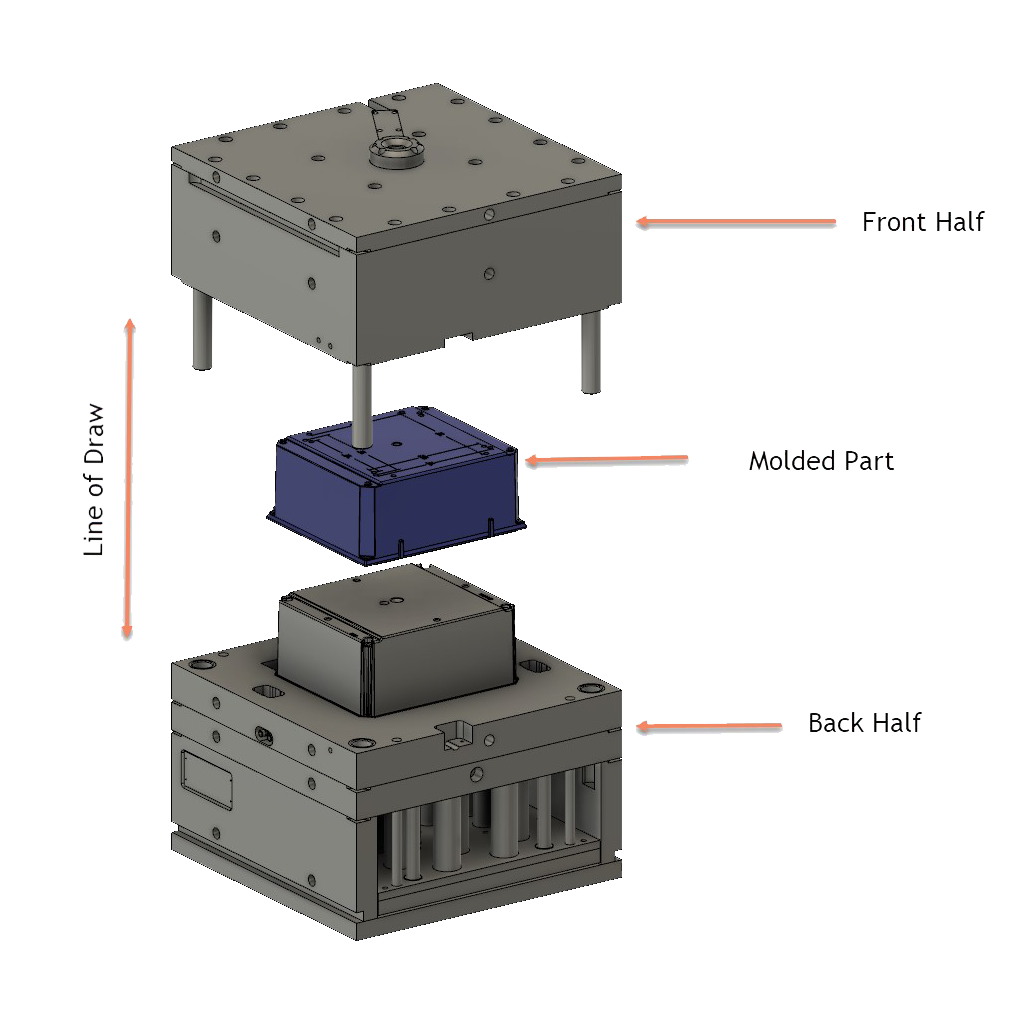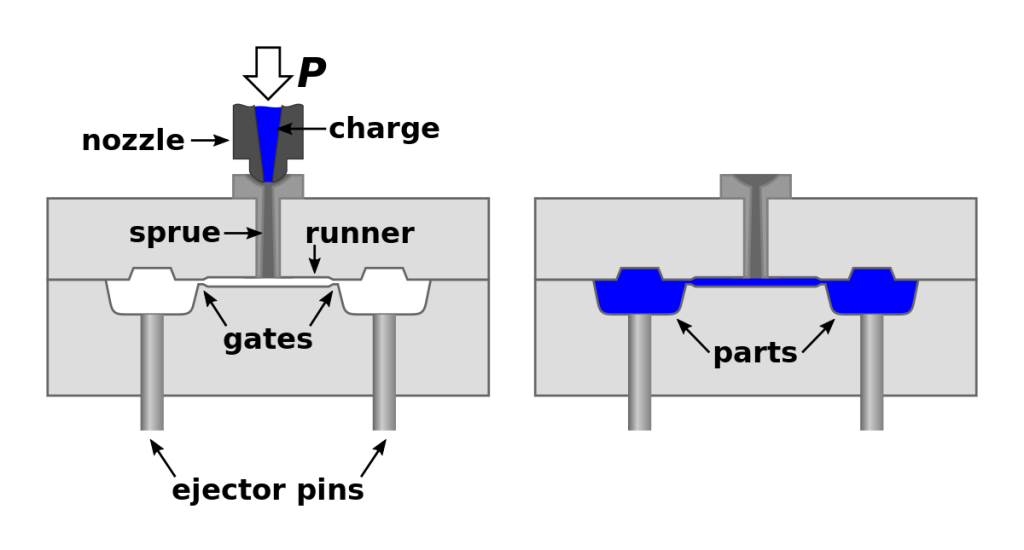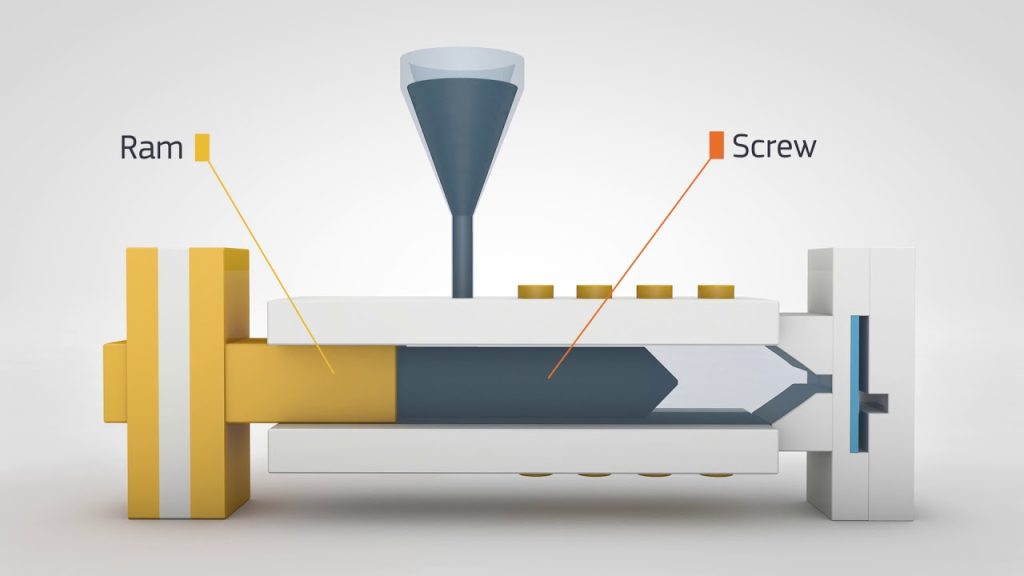Table of Contents
- Designing Injection Molds: A Comprehensive Guide
- 1. Understand the Requirements
- 2. Choose the Right Type of Mold
- 3. Determine the Parting Line
- 4. Design the Mold Layout
- 5. Design the Mold Cavity and Core
- 6. Design the Gating System
- 7. Design the Ejector System
- 8. Design the Cooling System
- 9. Validate the Mold Design
- 10. Choose the Right Injection Molding Machine
- Frequently Asked Questions
- What are the important considerations in designing injection molds?
- What materials are used to make injection molds?
- What are some common design errors to avoid when designing injection molds?
- How can I optimize my injection molding process?
- How can I ensure that my injection molded parts are of high quality?
Are you interested in designing injection molds? If so, you’ve come to the right place. Injection molding is a complex process that requires careful planning and design. From creating the initial concept to selecting the appropriate materials, every step is crucial to ensure a successful outcome.
Designing an injection mold requires expertise and experience. In this guide, we’ll walk you through the process step-by-step and provide you with tips and tricks to help you create a high-quality mold. Whether you’re a seasoned professional or just starting out, this guide will provide you with the knowledge and skills you need to design injection molds that meet your specific needs. So, let’s get started!
- Define the product and its requirements
- Design the part and check for manufacturability
- Create a mold design
- Test the mold design with prototyping and simulation
- Manufacture the mold and run production
Designing Injection Molds: A Comprehensive Guide
Injection molding is a highly efficient method for mass-producing plastic parts. It is widely used in various industries for its versatility, speed, and accuracy. However, designing an injection mold is a complex process that requires precision and expertise. In this article, we’ll take you through the step-by-step process of designing an injection mold.
1. Understand the Requirements
The first step in designing an injection mold is to understand the requirements of the part you want to produce. You need to determine the type of plastic material you want to use, the size and shape of the part, and the expected production volume. This information will help you determine the type of mold you need and the best way to design it.
Once you have a clear understanding of the requirements, you can start designing the mold. The mold design should take into account the type of plastic material you’re using, the size and shape of the part, and the expected production volume.
2. Choose the Right Type of Mold
There are many types of injection molds available, each with its own unique features and benefits. The most common types of molds include two-plate molds, three-plate molds, hot runner molds, and cold runner molds. Choosing the right type of mold will depend on the specific requirements of the part you want to produce.
Two-plate molds are the simplest type of mold and are suitable for simple parts with few or no undercuts. Three-plate molds are more complex and are suitable for parts with more complex geometries. Hot runner molds are used for high-volume production runs, while cold runner molds are more suitable for low-volume production runs.
3. Determine the Parting Line
The parting line is the line that separates the two halves of the mold. It’s important to determine the parting line early in the design process, as it will affect the mold design and the final part. The parting line should be located in a position that allows for easy ejection of the part from the mold.
4. Design the Mold Layout
The mold layout should be designed with the parting line in mind. The layout should include the gating system, the ejector system, and the cooling system. The gating system is the system that allows the plastic material to flow into the mold cavity. The ejector system is the system that ejects the part from the mold. The cooling system is the system that cools the mold and the part.
5. Design the Mold Cavity and Core
The mold cavity is the part of the mold that forms the shape of the part. The mold core is the part of the mold that forms the internal features of the part. The cavity and core should be designed with the parting line in mind and should be easy to remove from the mold.
6. Design the Gating System
The gating system is the system that allows the plastic material to flow into the mold cavity. The gating system should be designed to ensure that the plastic material flows smoothly and evenly into the mold cavity. The gating system should also be designed to minimize waste and reduce cycle time.
7. Design the Ejector System
The ejector system is the system that ejects the part from the mold. The ejector system should be designed to ensure that the part is ejected smoothly and without damage. The ejector system should also be designed to minimize cycle time.
8. Design the Cooling System
The cooling system is the system that cools the mold and the part. The cooling system should be designed to ensure that the mold and the part are cooled evenly and efficiently. The cooling system should also be designed to minimize cycle time.
9. Validate the Mold Design
Once you’ve designed the mold, it’s important to validate the design before you start production. Validation can be done through computer simulations or physical testing. Validation will help you identify any potential issues with the mold design and ensure that the final part meets the required specifications.
10. Choose the Right Injection Molding Machine
Choosing the right injection molding machine is crucial to the success of your production. The machine should be chosen based on the size and complexity of the mold, the material you’re using, and the expected production volume. The machine should also be chosen based on its reliability, speed, and accuracy.
In conclusion, designing an injection mold requires a thorough understanding of the part requirements, the right type of mold, and a well-planned mold layout. By following the steps outlined in this article, you can design an injection mold that meets your production needs and produces high-quality plastic parts.
Frequently Asked Questions
Injection molding is a complex process that requires expertise and precision. If you are new to designing injection molds, you may have questions about the process, materials, and tools involved. Here are some frequently asked questions and answers about designing injection molds.
What are the important considerations in designing injection molds?
Designing an injection mold requires careful consideration of several factors. The mold must be able to produce the desired part size and shape, withstand the stress of the injection molding process, and be easy to manufacture and maintain. Other important considerations include the type of plastic material to be used, the complexity of the part design, and the expected production volume. It is important to work closely with a skilled mold designer to ensure that all these factors are taken into account and the mold is designed to meet your specific needs.
The mold designer will typically use computer-aided design (CAD) software to create a detailed 3D model of the mold, which can be used to test the mold design and identify any potential issues before production begins. Once the mold design has been finalized, the mold will be manufactured using precision machining techniques and assembled with the necessary components to produce a high-quality finished product.
What materials are used to make injection molds?
Injection molds are typically made from high-strength steel or aluminum alloys that are able to withstand the high temperatures and pressures of the injection molding process. The choice of material will depend on several factors, including the expected production volume, the complexity of the part design, and the cost of the material. Steel molds are more durable and suitable for high-volume production runs, while aluminum molds are lighter and more cost-effective for smaller production runs.
In addition to the mold material, other components such as ejector pins, cooling channels, and hot runners may also be made from specialized materials such as beryllium copper or titanium, depending on the specific requirements of the mold design.
What are some common design errors to avoid when designing injection molds?
Designing an injection mold is a complex process that requires attention to detail and a thorough understanding of the injection molding process. Some common design errors to avoid include creating parts with undercuts or sharp edges that may cause the part to stick in the mold, designing parts with thin walls that may warp or distort during the molding process, and failing to provide adequate cooling channels to prevent the part from overheating. Another common error is failing to account for proper venting to prevent air pockets from forming in the mold, which can cause defects in the finished part.
To avoid these and other design errors, it is important to work closely with a skilled mold designer who can identify potential issues and provide solutions to ensure that the mold is designed to produce high-quality, defect-free parts.
How can I optimize my injection molding process?
Optimizing the injection molding process requires careful attention to several factors, including the mold design, the plastic material used, and the injection molding machine settings. To optimize the process, it is important to work closely with a skilled mold designer and injection molding technician who can provide guidance on the best practices for each step of the process.
Some key factors to consider when optimizing the process include selecting the right plastic material for the part design, ensuring that the mold is properly designed and manufactured to meet the specific requirements of the part, and adjusting the injection molding machine settings to achieve the desired part quality and production volume. It is also important to regularly monitor and maintain the mold and injection molding machine to ensure that they are performing at peak efficiency and producing high-quality parts.
How can I ensure that my injection molded parts are of high quality?
Producing high-quality injection molded parts requires attention to detail and a thorough understanding of the injection molding process. To ensure that your parts are of high quality, it is important to work closely with a skilled mold designer and injection molding technician who can identify potential issues and provide solutions to ensure that the mold is designed and manufactured to produce high-quality, defect-free parts.
Other factors to consider include selecting the right plastic material for the part design, ensuring that the mold is properly designed and manufactured to meet the specific requirements of the part, and monitoring the injection molding process to ensure that the part is being produced to the desired quality standards. Regularly inspecting and maintaining the mold and injection molding machine is also important to ensure that they are performing at peak efficiency and producing high-quality parts.
In conclusion, designing injection molds is a complex process that requires careful planning, attention to detail, and a deep understanding of the materials and manufacturing processes involved. With the right tools and techniques, however, it is possible to create molds that produce high-quality, consistent parts with minimal waste and downtime.
One key factor to keep in mind when designing injection molds is the importance of collaboration and communication. It’s essential to work closely with all stakeholders, including product designers, mold makers, and manufacturing teams, to ensure that everyone is on the same page and that the final product meets all requirements and specifications.
Ultimately, designing injection molds is both an art and a science, and success requires a combination of technical expertise, creativity, and a dedication to quality. By following best practices and staying up-to-date with the latest advances in materials and technology, designers can create molds that produce parts that meet or exceed customer expectations, while also optimizing production efficiency and minimizing waste.
Request a quote today!
[contact-form-7 id="1578" title="Contact form"]
Please compress the file into a ZIP or RAR file before uploading. Alternatively, send through your RFQ by email.
enquires@unitymanufacture.com





